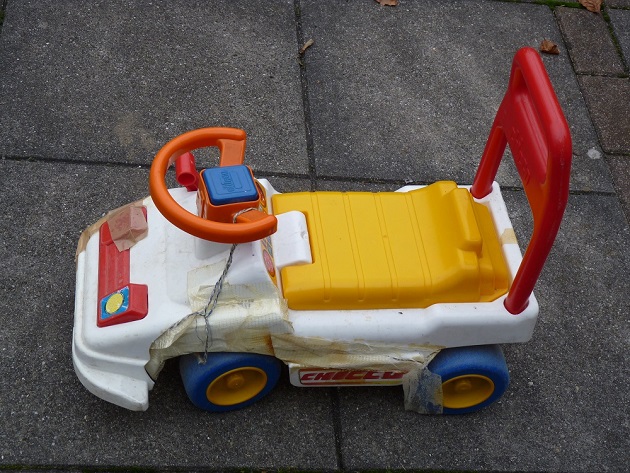| Author | Message | ||
Jeff Cheng Experienced User Username: makeshift Post Number: 45 Registered: 2-2016 |
*Apologies, title should be "...how TO pass time" Mods, please feel free to change that if you get bored...  So today as I was admiring the engine bay, cold beverage in hand, I thought to myself, "I wonder how many of these vacuum hoses are original?" After some poking around at some hoses that I *KNEW* were not for fluids, I still couldn't figure out whether they were soft generic vacuum hose or rigid molded hose (like the hard flametrap hose). Not good. Since I wasn't really planning on getting greasy, I settled on replacing the fuel weakener hoses (along with the missing filter can; a generic fuel filter will do; Z168 Commodore filter for those playing in Oz). I also replaced those little hoses leading to that thing (please tell me what it is if anyone knows) under the intake elbow. A short hose to the breather system and a long hose to the air filter intake housing under the fender. The real kicker to my story? That long 'vacuum' hose wouldn't fit in my shop bin, and when I tried to bend it, it snapped cleanly in two places. I guess those hood pads really keep the heat in. All this took me 20 mins and about $5 in vacuum hose, after which I made a quick note and went back to admiring the engine bay. I guess what I'm saying it, there's so many little hoses snaking around doing their own thing that all it would take is one to crack and you're troubleshooting all of them for leaks. Replacing them along the way here and there doesn't take much time and at least rules them out when/if issues need diagnosing. Keep the shiny side up! | ||
David Gore Moderator Username: david_gore Post Number: 2279 Registered: 4-2003 |
Jeff, Your request has been implemented  .. .. I have always replaced all rubber hoses every 8 years to avoid embrittlement cracking from heat degradation. I have experienced the hose shattering problem when trying to remove old hoses that have locked onto their nipple by rocking/twisting the hose from side to side to try and break the "glue" holding them on. When replacing the hoses, I use Molykote 111 Valve Lubricant and Sealer on all fittings as a release agent due to its temperature and chemical resistance plus its sealing properties. http://www.dowcorning.com/content/news/iam_news32.asp Subsequent later removal of the hoses is quick and easy. | ||
Alan Ford Frequent User Username: herne13 Post Number: 53 Registered: 8-2016 |
Last Friday my trickle charge solar kit arrived. We used 'Anderson' plugs in the boot of the Bentley and the job was so easy. Took a couple of hours but the time was well spent. The kit was under $40.00 Au delivered, a bargain. | ||
John Beech Experienced User Username: jbeech Post Number: 46 Registered: 10-2016 |
I wouldn't mind getting on with this job, but I absolute hate the guess work involved. Does anyone know the various sizes of vacuum line involved so I may buy 50' spools of the various sizes and thus, once I get down to the job I can make progress without having to constantly stop and run to the auto parts store for the size I don't have? The various wall-thicknesses make measuring an OD and guessing an ID fruitless and exercise in frustration. Finally, good tip on the Dow Molykote 111 Valve Lubricant and Sealer, David. I have a tube wending its way to me as I type. | ||
Brian Vogel Grand Master Username: guyslp Post Number: 2118 Registered: 6-2009 |
John, I know that Jon Waples documents the sizes of tubing needed for the vacuum lines on the SY (Shadow & Derivatives) cars in his book, The Shadow Owners' Companion, which I do not have at hand at the moment. Remind me later and I'll dig it out. It's worth buying a copy for yourself, too. A word of warning: replace one, and only one, segment at a time and always run the car after each one. You can introduce all kinds of issues either by introducing a leak or even by getting rid of one if the car has been adjusted to run reasonably with that leak having been present over the long term. If you change many or all at the same time you have a horrific amount of detective work to do if things don't function as expected. Brian | ||
John Beech Frequent User Username: jbeech Post Number: 52 Registered: 10-2016 |
Hi Brian, I'm looking at my copy of the book as I type. Haven't gotten to it and now have a reason. And thanks for the tip about changing them one at a time and test driving after each. Good advice, I'm sure. John, who is deriving a lot of pleasure because of Tootsie (I've been buried with work the last two years and this is the first time I've come up for air). | ||
Jonas TRACHSEL Prolific User Username: jonas_trachsel Post Number: 102 Registered: 2-2005 |
When I read "Tootsie" I get in my mind the following picture:  Sorry John, no offense intended Jonas |